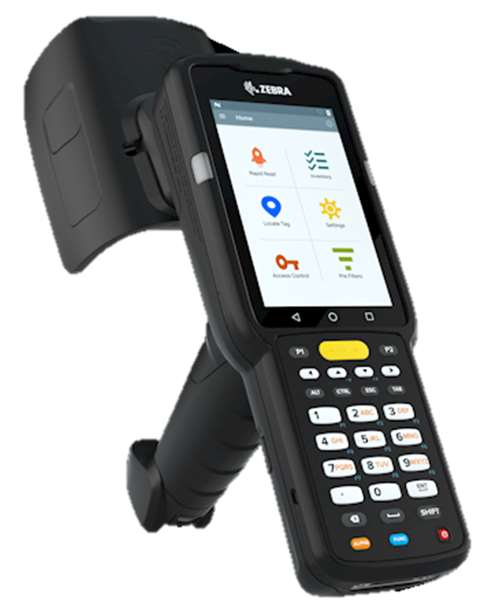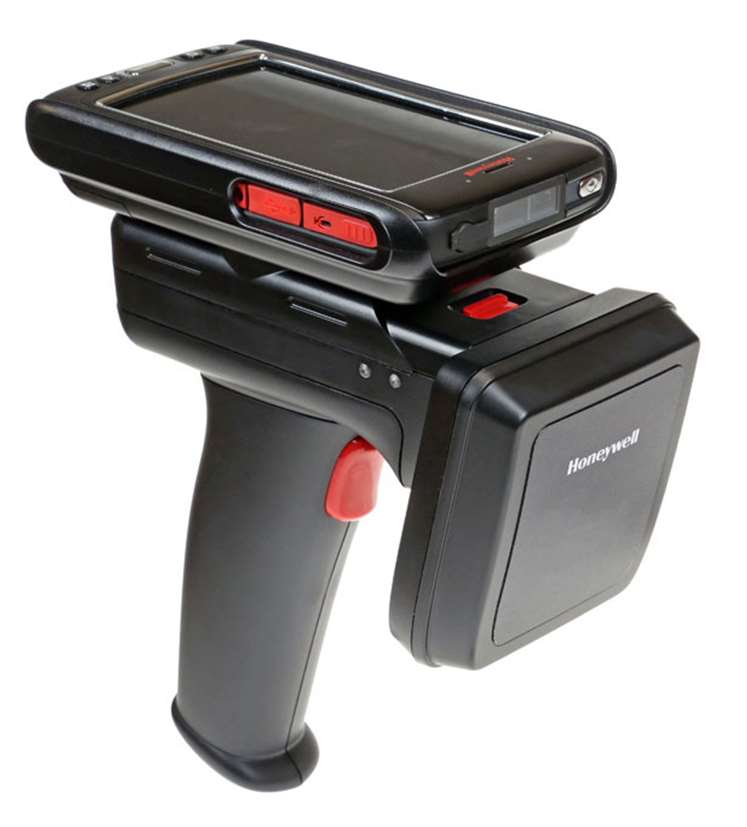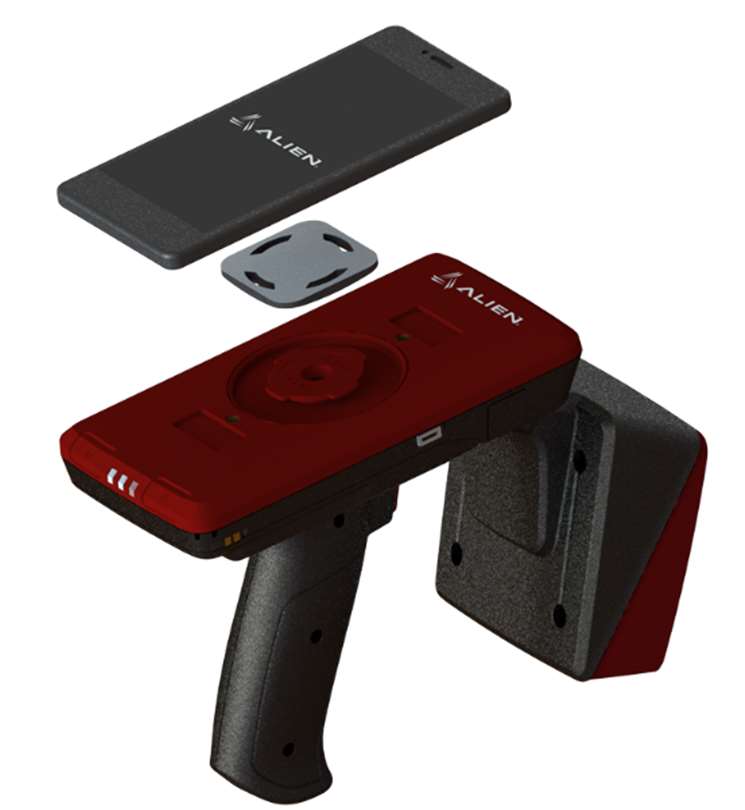Blog
What to Know about RFID
What is RFID?
RFID stands for Radio Frequency Identification, which describes a system that transmits a unique identifier, like a serial number, of an object or person wirelessly using radio waves. It falls under the category of Automatic Identification Technologies (AIT), which also includes bar codes, optical character readers, and some biometric technologies, such as retinal scans.
How Does RFID Work?
The components needed to be able to use RFID effectively include a tag, a reader, and a computer system. A typical RFID tag consists of a microchip attached to a radio antenna mounted on an item. A typical reader is a device that has one or more antennas that emit radio waves and receive signals back from the tag.
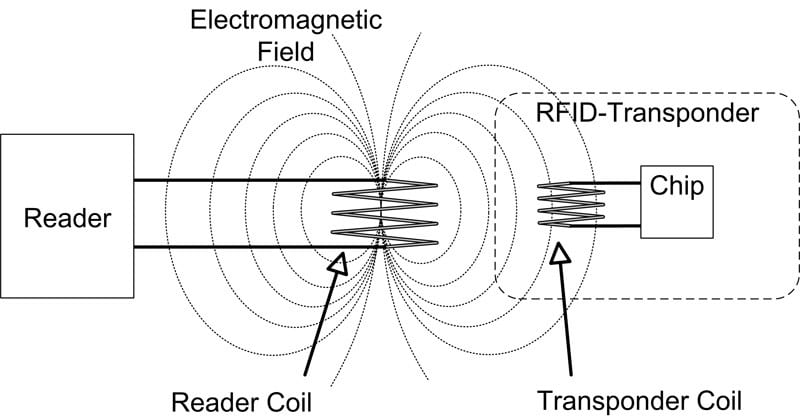
The microchip stores information about a product or shipment such as date of manufacture, destination, and sell-by date. The chip in a tag can store as much as 2-8 kilobytes of data, depending on if it is disposable or reusable. The RFID reader retrieves the data stored on an RFID tag by sending and receiving radio signals via the antennas. The reader then passes the information in digital form to a computer system.
What are the Types of RFID Tags?
RFID tags can be classified by the radio frequency range they use to communicate (low, high, or ultra-high), and the way the tag communicates with the reader (active or passive). Generally speaking, the lower the frequency of the RFID system, the shorter the read range and slower the data read rate.
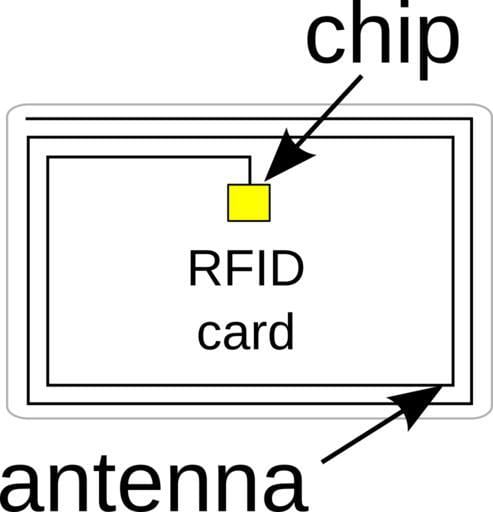
Low Frequency (LF)
– LF systems operate in the 30 KHz to 300 KHz range, and have a read range of up to 10 cm.
– While they have a shorter read range and slower data read rate than other technologies, they perform better in the presence of metal or liquids.
High Frequency (HF)
– HF systems operate in the 3 MHz to 30 MHz range and provide reading distances of 10 cm to 1 m.
– HF waves can pass through most materials except for water and dense metals. Thin metals, like aluminum, can still be tagged with HF tags and function normally.
– HF tags rely on magnetic coupling as their power source so they tend to last the lifespan of the application unless damaged by wear and tear to the tag.
Ultra-High Frequency (UHF)
– UHF systems have a frequency range between 300 MHz and 3 GHz, offer read ranges up to 12 m, and have faster data transfer rates.
– They are more sensitive to interference from metals, liquids, and electromagnetic signals.
Active RFID Tags
– Powered by a battery and are able to transmit data at all times.
– The signal boosting power received from the internal battery also helps these tags to overcome any materials that usually hinder RF waves like metal and water.
– They rely on a battery for power, so these tags (like their batteries) can only last about 3-5 years.
– Because active tags beacon, they are easier to read while moving and are ideal for tracking cargo containers and vehicles.
Passive RFID Tags
– Must be powered up by the RFID reader before transmitting data.
– Passive UHF tags come in many varieties like rugged, high-temperature, label tags, and high memory.
– These tags tend to last the lifespan of the application unless damaged by wear and tear. They do not have batteries so their lifespan is not dependent on a power source.
– They can be attached and embedded on a wider variety of objects.
RFID tags come in multiple shapes, sizes, and materials. Passive tags are usually smaller, less expensive, and more flexible than active tags. In most instances, each type of RFID tag can only be read by the same type of RFID reader.
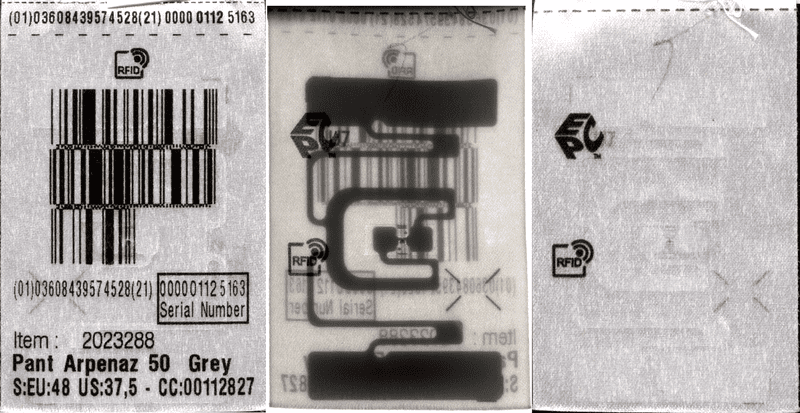
What are the Types of RFID Readers?
Fixed RFID Readers
– Fixed readers are set up to read a specified area. This allows a highly defined reading area for when tags go in and out of the zone.
– They have higher power than other readers, and are ideal for non-mobile applications. Depending on the unit, they can have medium to high performance levels.
Integrated RFID Readers
– Integrated readers are perfect for small reading zones meaning you can focus more attention to specific areas.
– This allows you to take inventory more accurately, find out if there are items in stock, and help others find what they’re looking for.
Mobile RFID Readers
– Mobile readers may be handheld or mounted on movable objects.
– A handheld mobile has different applications that allows you to find a product quickly and easily.
– With a RFID-enabled pallet, you can identify the products and categorize them to ensure they are the right products.
– Vehicle Mounted RFID readers have the ability to identify vehicles from a distance with quicker scans.
What are the Types of RFID Microchips?
Microchips in RFID tags can be read-write, read-only or write once, read many (WORM).
– With read-write chips, you can add information to the tag or write over existing information when the tag is within range of a reader. Read-write tags usually have a serial number that can’t be written over.
– Read-only microchips have information stored on them during the manufacturing process. The information on such chips can never be changed.
– WORM tags can have a serial number written to them once, and that information cannot be overwritten later.
What Are the Benefits of RFID?
RFID was designed to reduce the amount of time and labor needed to input data and improve data accuracy. Barcode systems often require a person to manually scan a label or tag to capture the data. RFID is designed to enable readers to capture data on tags and transmit it to a computer system without needing a person to be involved.
Many companies are attracted to RFID because it has the potential of offering perfect supply chain visibility – the ability to know the precise location of any product anywhere in the supply chain at any time. Since read ranges can go up to hundreds of feed, RFID systems offers a fast and reliable way to track assets without having to count each individual item.
Because data is being collected and uploaded electronically, RFID also avoids transcription errors, duplication of data and “missed items” when used to collect data on large numbers of items simultaneously. By improving inventory management, organizations using RFID can provide a service that creates competitive differentiation and promotes increased customer satisfaction with the opportunities for higher sales and better margins.
Who Should Take Advantage of RFID?
RFID systems offer benefits for businesses of all sizes, allowing them to rapidly improve efficiency and reduce cost by automating processes and improving utilization of assets and quality. Any industry can benefit from the use of RFID. Some common uses are:
– Asset Tracking
– Fleet Management
– Manufacturing Workflow
– Roadway Work

Any organization currently using barcode technology would benefit from upgrading to RFID or a combination of barcode and RFID. The cost savings and enhanced revenues achieved can very quickly cover the cost of the initial outlay.
With a wide range of choices, finding a RFID system that meets your needs can be difficult. In order to choose the type of RFID that works best for a given system, certain requirements need to be considered such as read range, data transmission rates, available features, etc.
If you have more questions or would like to further discuss your unique challenges, please schedule an appointment.
